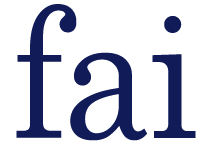Last week a coalition of NYC-based nonprofits released a report on the financial status of immigrants in Queens. It’s part of a growing body of research drawing attention to how financial service providers can meet the distinct needs of America’s massive immigrant market. Just last summer the Center for Financial Services Innovation published a national, in-depth analysis of immigrants’ financial needs and recommendations for addressing them . . . . .
Read MoreWhen Financial Awareness doesn’t lead to Financial Access
What does financial access look like? I like to think of it as a non-prescriptive goal in two parts. First, high-quality, affordable financial services are available. Second, people are aware of the services available to them. When these conditions are met, people are free to choose whether or not to use the services, and “access” is created. . . .
A recent working paper challenged me to probe this definition of access further. Using data from the Mexican Family Life Survey, the authors explore a) whether households are aware of a specific financial product, and b) given that awareness, if they use the product. They found, among other results, that while the availability of one type of formal loan in a given locality did predict households’ knowledge of that credit, it did not lead them to use it . . . . . .
Read More“What’s in it for me?”: Putting Research to Practical Use
In mid-June the Stanford Social Innovation Review blogged the results of a survey they conducted. The survey’s purpose: to understand the role of academic research in the work of practitioners in a broad range of social, environmental and economic issue areas. Many of the 1,800 respondents described academic research as difficult to access, expensive, too narrow, and not relevant. Seventy percent cited the “difficulty of translating research findings into concrete action” as one of the reasons for a substantial gap between the two worlds. . . .
The results of the survey brought to my mind strong words from former Freedom from Hunger CEO Chris Dunford about the usefulness and applicability of one specific type of academic research, randomized control trials . . . . . .
Read MoreBeing Poor Above the Poverty Line
What does it mean to live between poverty and the middle class? In a multi-media report released last week, Al Jazeera America digs into the lives of 5 Californian families that "earn too much to receive most government benefits yet too little to reliably make ends meet." . . .
The piece profiles families with income below the self-sufficiency standard, a measure developed by the University of Washington in the 1990s. The self-sufficiency standard varies from household to household. It takes into account regional cost-of-living, ages of household members, and all major budget items. More people live below this standard than the federal poverty line, which doesn't allow for geographic cost differences and is based on assumptions about only the food portion of household budgets. According to Al Jazeera's report, the average self-sufficiency standard for a family of 4 in California is an annual income of $63,979 while the federal poverty threshold is only $23,850 . . . . .
Read MoreWalmart is Coming for Your Banks
In April Walmart announced the launch of a new money transfer service. I did a double take on the service's low price: $9.50 to send up to $900 from one Walmart store to another – that’s as much as $66.50 cheaper than the price of competing services at Western Union and Money Gram. . . .
This is just the latest example of Walmart's foray into the financial services industry. In 2012 the retailer launched the Bluebird prepaid card with American Express. The product has no monthly fees or minimum balance requirements, making it more affordable than the norm. The cost of cashing a check at Walmart's Money Center is a transparent flat rate, often cheaper than independent financial services centers that take a large percentage of a check's total. The big box store also offers car insurance “one stop shops” at a growing number of locations, and it houses bank branches with “convenient hours, free financial education and unusually forgiving account features”. All in all, Walmart seems to consistently deliver more budget-friendly financial tools than its competitors. And not only do its financial products come at a lower price for consumers; they are all offered in the same place, easing the burden on people who are squeezed for time and transportation . . . . . .
Read MoreUnhappy Tax Day for Some
Last week the New York Times highlighted a trend among low-income communities: people seeking tax prep at unregulated, sometimes fraudulent, pop-up shops. The article explains, "for millions of low-income Americans tax season means the biggest one-time influx of money all year." When preparers hand these customers a lump sum much larger than they're used to seeing on a daily basis, many filers don't think to check the numbers. After all, they sought a professional to do the work so they wouldn't have to . . . . . .
Low-income tax filers are vulnerable. . . .
Read MoreShould Your Post Office Be a Bank?
Last month brought a flurry of opinions on postal banking in response to a new proposal that the US Post Office offer financial services – including bill-pay, check cashing, even small loans – to the “financially underserved.” Reactions have ranged from enthusiastic to deeply skeptical. This post highlights two key questions that have been posed and synthesizes some of the answers offered up so far. . . .
Would the underserved consumer actually benefit? . . .
Some say yes. There’s evidence that the Postal Service’s financial products would be able to reach people who are “significantly poorer, older, less educated, and less likely to be employed” than those who bank at formal financial institutions according to CGAP, citing a 2013 Findex report which found that as much is true in other countries with postal banking . . . . . .
Read MoreThe Price of (Dis)Trust
No consumer likes overdraft fees. Overdraft fees are often unexpected, expensive, and in some cases undeserved. What’s more, they can wreak financial havoc on households living on a low-income. . . .
But the larger issue is not the fees themselves. It’s the lack of transparency surrounding them and the widespread consumer distrust that results. . . .
Edelman is a PR firm that surveys people around the world to create an annual Trust Barometer (among other things), which gauges levels of trust in different institutions. In 2012 it found that only 41% of respondents in the U.S. trust banks – which, by the way, were at the bottom of the list right along with financial services. The year’s ratings on banks are second-worst only to 2011, when they hit a low of 25% . . . . . .
Read MoreOverdraft as a Product, not a Penalty?
The Taylors overdraft their checking account every two weeks, on purpose. . . .
As described in a recent issue brief published by the U.S. Financial Diaries, the Taylor family’s income level varies significantly from month to month. Sometimes it’s not enough to cover all of their expenses. So, they opened an account at a bank with a simple overdraft fee structure: One $35 charge per overdraft, no daily fees, and an allowance of up to $500 at a time. Since the Taylors typically make only one large cash withdrawal per paycheck – the entire amount of pay – this bank would charge them at most one $35 overdraft fee each cycle, if they happen to need more cash than the amount of that week’s direct deposit. . . .
The Taylors use overdrafts as another household might swipe a credit card or take out a payday loan. Since their credit history eliminates the card option and they are already tied up with a payday lender, over-drafting becomes another logical – and probably more convenient – place for them to turn to stay on top of their bills. It’s clear that the family responded to and relies on their new bank's transparent behavior. They saw its fee policy, understood how they could manage it, and became a customer . . . . . .
Read MoreWhen You Need $128 to Have No Money
“Wow, the consumer knows about that?” . . .
This was essentially how a banker responded when I told him the story of a woman I interviewed for the US Financial Diaries study. The participant – we’ll call her Jenna – was charged four $32 overdraft fees in the same day ($128 total, if you’re counting). Jenna explained to me that if her bank had processed her transactions in the order she had made them, there would only have been one charge. Instead, the bank posted her largest purchase first, which was enough to take her account balance below $0. That triggered the initial $32 fee, and then three smaller debit card swipes she’d made earlier in the day each prompted fees as well . . . . . .
Read MoreUnder-savers Anonymous: A US Chapter?
As a field researcher collecting data for the US Financial Diaries project in Cincinnati, I interviewed 30 low-income families about the details of their household finances over 16 months. One question was always in my mind: What’s the difference between their financial lives and mine? And how might this comparison help design financial products for people who are struggling to make ends meet? One of the most important distinctions I identified was our vastly different abilities to save. For me, an unexpected $300 car repair might be a pain in the butt, sure – but I’m able to deal with it by dipping into my savings account. For USFD families, that same bill could throw the household into a mire of debt, stress, and embarrassment (not to mention lack of transportation). . . .
My experience in the field lines up with data on the dismal savings rate in the US compared to other parts of the world. It speaks to the difficulty of putting aside money when very little is coming into a household in the first place, and it highlights the dearth of financial products offering effective carrots or sticks to boost Americans’ savings . . . . . .
Read More


